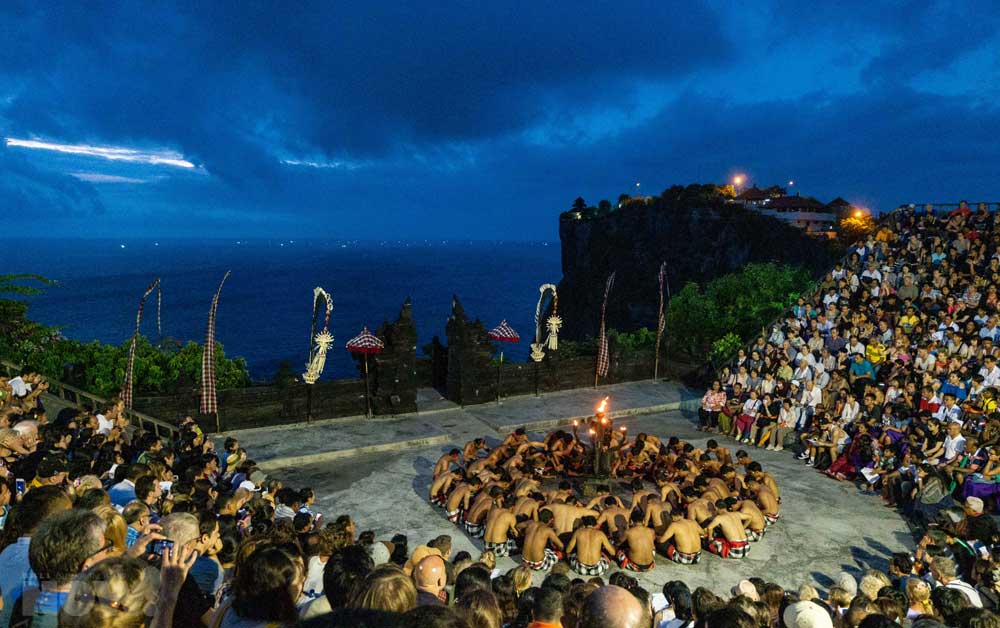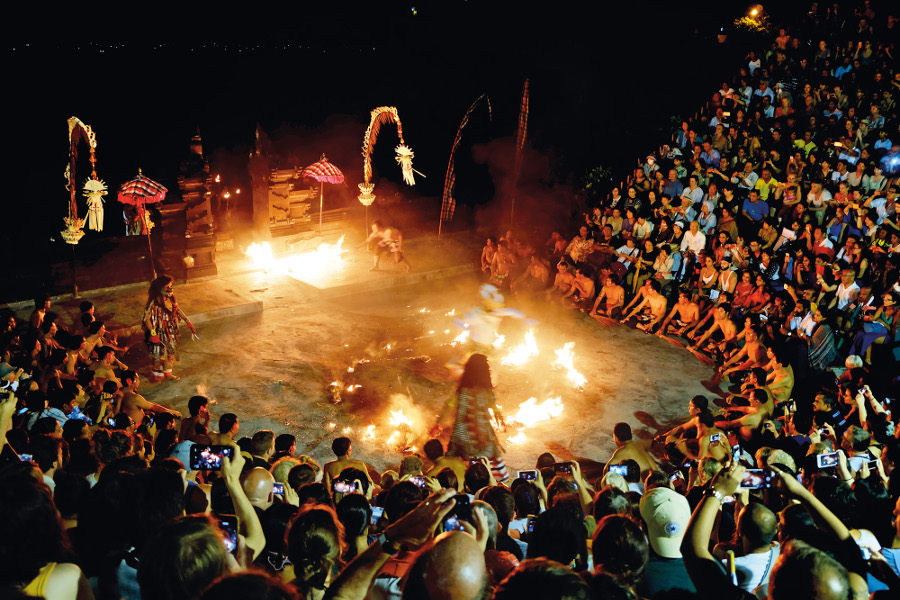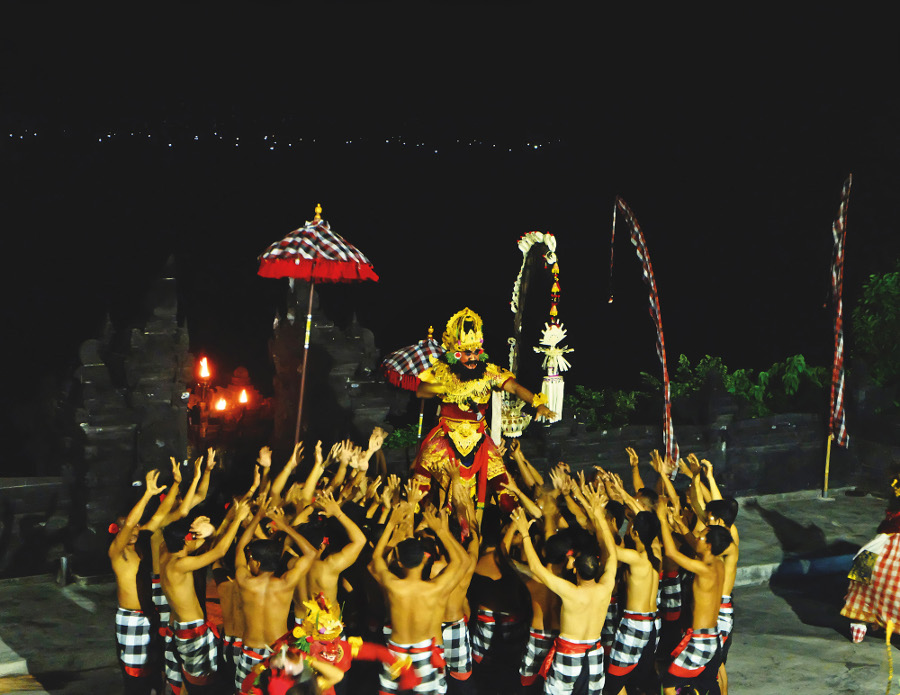Afternoons are always a good time to visit Uluwatu, the southern tip of the island. Not only to admire the lovely sunset from the top of the cliff but also to watch the famous Kecak Dance Performance, also known as the Bali Fire dance, which overlooks Uluwatu Temple. But what is the Kecak, and what’s the story behind this special dance performance?

History of the Kecak Dance
The Kecak Dance is one of Bali’s most prominent cultural showcases, but it isn’t exactly an ‘ancient’ tradition. The dance was created back in the 1930’s, a collaboration between Balinese dancer Wayan Limbak and the German artist Walter Spies.
The Kecak dance had existed prior to this, but as a trance ritual and far from what it has become today… essentially the two artists adapted the famous story of the Ramayana into a theatric display of Balinese dance, with elements of its original ‘cak’ and other incorporations.
Wayan Limbak then brought travelling dance troupes to display this performance around the world, cementing a cultural showcase that people thus recognised as ‘Bali’.

The Story and Elements of the Kecak Dance
The Kecak dance is performed by more than a dozen dancers; in fact, it might contain the most dancers on stage at any one time of all of Bali’s famous dances. The choir group consists of 50 or more male dancers who perform very basic routines. The main dancers, who play the most significant roles and perform countless dance routines, typically include around 10 to 15 dancers.
The dance narrates the story of Asia’s most famous epic, Ramayana. Although originally from India this story has since spread to every corner of Asia, in particular, South East Asia through the same channel as Hindu and Buddhist teachings. In Bali, the Ramayana story has become part of the cultural life and religious and moral teachings since the Hindu teachings came to the island around 100 BC.
The sun was still far above the horizon when I arrived at the venue, around 10 minutes before the performance began. I could still see the clear blue sky meeting the glistening ocean from my seat. At 6pm, a group of male performers, neatly wrapped in black and white checkered garments, came onto stage singing, “cak…cak…cakcakcakcak…cak…” before sitting, cross-legged in a circle. Some liken the noise they make to the sound of a group of monkeys, while others claim it is just a sound that is produced to scare enemies.

Rama and Sita, the two protagonists, enter the stage to perform beautiful and poignant dance routines depicting the vibrant love between the two humans. When Rama leaves to go hunting, a vicious and evil giant called Ravana delegates his men to kidnap the Princess. Lakshmana, Rama’s younger brother, is startled to find Sita missing, but wastes no time in going to Lanka (Ravana’s Palace) to rescue her. Jatayu, a demi-god who takes the form of a vulture, helps to rescue Sita, but in the process he is badly injured.
At the last minute, savior comes from Hanuman and his followers. Hanuman is a Hindu deity, the incarnation of Lord Shiva, and the central character in the story. Sadly, Ravana captures the brave Hanuman. The monstrous giant has the White Monkey King tied up while his men prepare the wood and fire to burn him alive. This is where the nickname of the Bali fire dance came to fruition.
But of course, it’s not that easy to defeat the mighty Hanuman. The wood is burning bright flames around him, but with magical, supernatural power Hanuman releases himself and rises from the blaze. At the same time, the sun is setting. The sky is patched with red, orange and pink hues; a breath-taking end to a great story.
Want to see a Kecak Bali fire dance for yourself? Here’s a list of different places that present this special performance in Bali.






